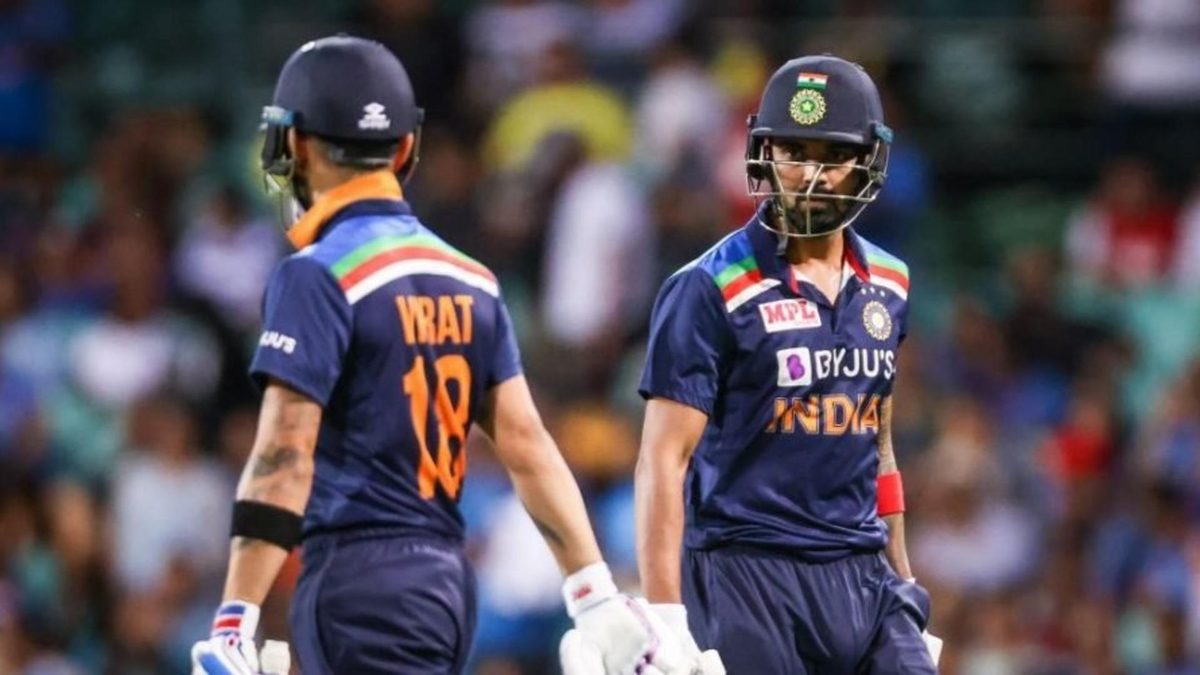
A T20 World Cup at home five years after another similar event in the same country, but have India learned from their past?
Subscribe to the Wisden Cricket YouTube channel for post-match awards, player interviews, analysis and much more.
If India’s journey in cricket’s youngest format were to be made into a movie, that misty night at the Wankhede in 2016 should be the one where the BGM amps up, the cameras panning in on the dressing room as each member goes through an epiphany. England had one in 2015 in limited-overs cricket, so well documented that it’s recalled every single time their 2019 World Cup victory is discussed.
Unfortunately for India, not a whole lot has changed since that night where they lost just two wickets while making 192, dismissed Universe Boss Chris Gayle and T20 World Cup specialist Marlon Samuels for single-digit scores, yet ended up on the losing side.
West Indies needed 73 runs from the last six overs against India #OnThisDay in 2016, in order to secure a spot in the #T20WorldCup final.
🎥 Watch how @Russell12A and @54simmo finished it with two balls to spare 👇 pic.twitter.com/I5ZAvdhiYJ
— ICC (@ICC) March 31, 2020
You could sum up Ajinkya Rahane’s T20 career from that one match. The six fours in one over off Sreenath Aravind in IPL 2012 was probably peak Rahane in T20 cricket. Sadly, few would recall that over this infamous innings where he opened the batting, and played on until the 16th over to make 40 off 35 balls, the definition of a match-losing innings.
Wicket preservation against risk taking is an age old debate in cricket and in the age of T20 cricket, it’s become that question with a red asterisk that teams just cannot skip and move on from. India have inclined towards the former while teams like West Indies and England are at the other end of that spectrum.
Among full member teams, since the beginning of 2018 in T20Is, India have four players in the top 12 in the list of best batting averages (min 10 innings). Only one of them strikes at a rate of over 150 and he is no longer a part of the T20I setup (Dinesh Karthik). Sort by strike-rate and India have three in the top 30. One of them is Karthik and the other (Washington Sundar) has an average of six. Hardik Pandya is the only player that fits into the modern day classification of a premier T20 hitter.
Among the top five ranked teams in the ICC T20I rankings, the combined batting strike-rate of India’s top three is the second-worst after Pakistan since start of 2019 while the corresponding batting average is the second-best after Australia, clearly indicating a mindset that’s built around wicket preservation.
The only time they deviated from this narrative was in the second T20I against England in March when they sent Ishan Kishan to open the batting alongside KL Rahul. Kishan blasted 56 in 32 balls, 27 of them coming off 15 balls in the powerplay. Next game, he was played at No.3.
The four batsmen India have used the most in the top three in T20Is since 2020 are KL Rahul, Virat Kohli, Rohit Sharma and Shikhar Dhawan. Three of the four strike at a rate of less than 140 in this time frame, far from ideal for a top-order batsman in this format playing for a top tier team.
To compound this, their mainstay No.4 batsman, the one most used in recent times – Shreyas Iyer – has a T20 career strike-rate of 130.32; one that is at 128.89 from the start of 2020.
With the inclusion of Suryakumar Yadav and the resurgence of Rishabh Pant, that narrative has changed a bit, but the top four might still remain the same when the T20 World Cup arrives later this year, mainly because India have often been reluctant to move on from their ways.
It’s not that they haven’t been successful. They are the No.2 ranked ICC team and their bowling attack – boosted by Jasprit Bumrah’s presence – has delivered on most occasions. But with more shadows than ever before cast on the bowling group, India’s top-order approach raises a lot of questions.
Since the devastating loss in the 2016 T20 World Cup semi-final, India have scored less than 200 six times while batting first and losing less than four wickets, the third-most among full member teams after Pakistan and South Africa. They lost two of these matches and won four.
They are far more adept when there’s a clear target to gun down. Since the end of the 2016 T20 World Cup, India have won 23 of the 32 T20Is where they have chased scores. When batting first, the ratio is 21:13. From 2019, it’s a lot closer at 8 wins and 7 losses.
Five years since the debacle, have India learned their lesson? They might still be one of the top T20I sides in the world, but to bag that elusive ICC trophy, they will want to iron out this safety-first approach that is far from fool proof.








